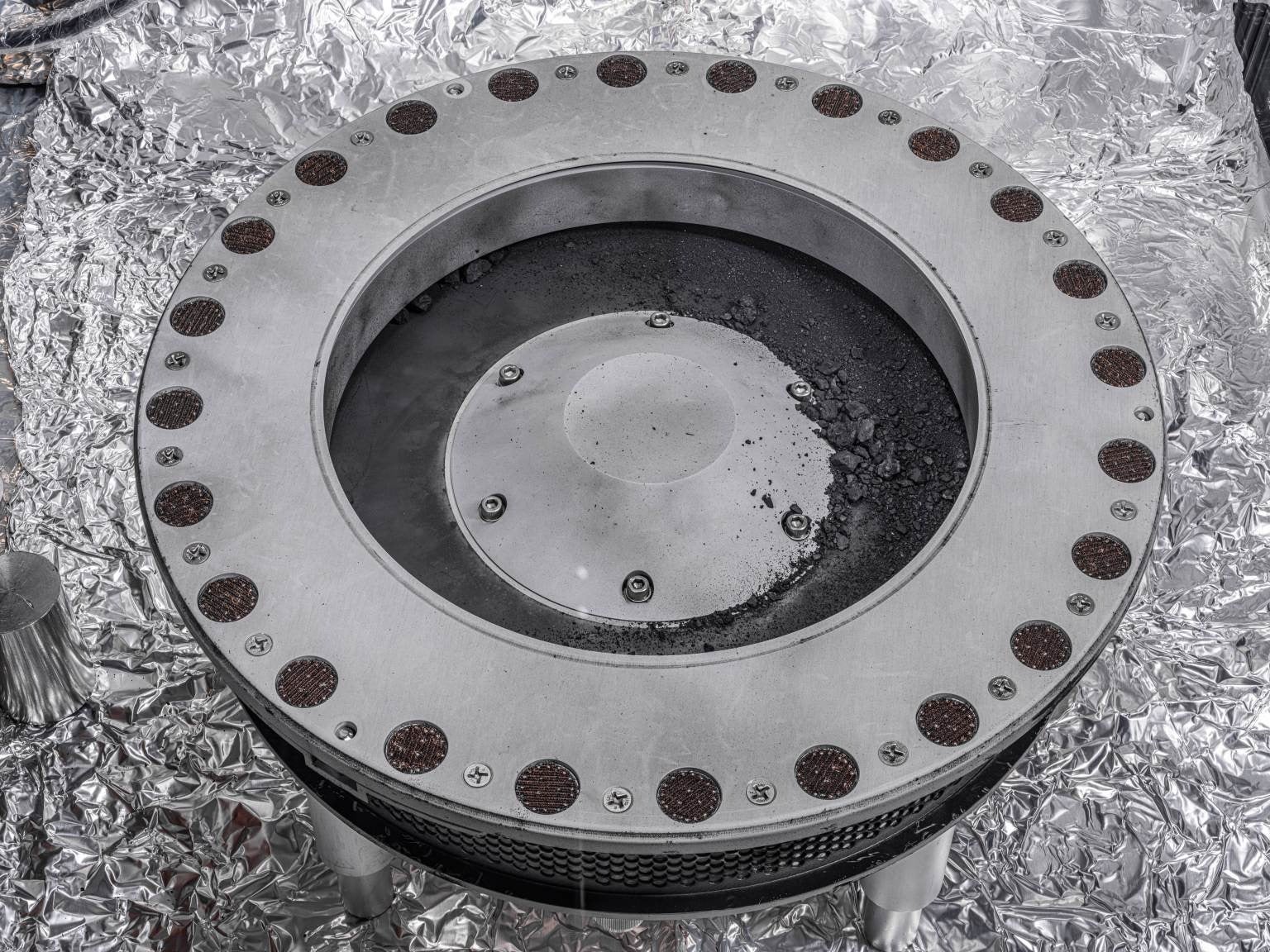
On a sunny autumn morning just over two weeks ago, NASA’s Origins, Spectral Interpretation, Resource Identification, Security-Regolith Explorer (OSIRIS-REx) mission successfully sent its sample return capsule parachuting through the atmosphere to land safely in the Utah desert. Inside that capsule was a singularly precious cargo: pristine pieces of the near-Earth asteroid Bennu. After careful transport and disassembly, researchers have now gotten their first detailed look at the ancient material.
NASA officially unveiled the first results from the sample this morning, based on an initial “quick-look” analysis. It shows the asteroid contains both a high percentage of carbon and evidence of water. And the presence of these materials together means that organic molecules — the building blocks of life — may also be present.
Rich in water and carbon
Bennu is a carbonaceous (carbon-rich) asteroid that dates back more than 4.5 billion years to the early days of the solar system. Its surface has not undergone processing over time, which means its material offers a pristine, unaltered look at the building blocks of our planets.
Once scientists recovered the sample, they imaged it with several different techniques, using X-rays, infrared light, and a scanning electron microscope. Researchers even reconstructed one of the grains in 3D and performed a basic analysis of the elements present.
Their first results indicate the grains contain a lot of carbon and clays that must have formed in the presence of water. The find bodes well for scientists interested in probing the sample to learn more about the abundance and role of such materials in the early solar system.
The best problem
The sample’s journey began when the OSIRIS-REx spacecraft approached the 1760-foot wide (500 meters) asteroid with its Touch and Go sample Acquisition Mechanism (TAGSAM) at the end of an extended arm. The TAGSAM was designed to act like a “reverse vacuum,” according to its creator Lockheed Martin, sending out a puff of gas once near the surface to dislodge small pieces of regolith for collection inside the TAGSAM head.
The goal was to capture at least 2 ounces (60 grams) of material. The procedure worked almost too well — the TAGSAM head sank some 20 inches (50 centimeters) into the soft surface of the asteroid and came away literally overflowing with pieces of Bennu in images taken onboard the craft.
The mission team eventually got the sample stowed and about half a year later, OSIRIS-REx turned toward home, dropping off the sample return capsule Sept. 24 this year during an Earth flyby. NASA collected the capsule and transported it to the Johnson Space Center in Houston the next day, where disassembly of the TAGSAM head, arm, and sample canister began inside a specially built clean room, with the spacecraft components ensconced in custom “gloveboxes” to allow the team to access the sample without exposing it to Earth’s atmosphere.
On Sept. 26, the team finally got their first up-close look at sample canister lid — and discovered it was coated with so much “extra” asteroid regolith that extreme care was needed.
“The very best ‘problem’ to have is that there is so much material, it’s taking longer than we expected to collect it,” said NASA’s Christopher Snead, the mission’s deputy curation lead, in a press release. “There’s a lot of abundant material outside the TAGSAM head that’s interesting in its own right. It’s really spectacular to have all that material there.”
Vital clues within
With the initial cursory examination complete, the sample will now undergo years of careful analysis, which researchers expect to yield a wealth of information about Bennu and other asteroids like it. NASA plans to share the material with more than 200 collaborators across the globe for a wide variety of investigations.
Ultimately, the container of space rock and dust will teach us about the conditions of our fledgling solar system, as well as reveal how the components of life might have arrived on Earth. Understanding the chemical and physical makeup of Bennu also has implications for planetary defense — Bennu is a near-Earth asteroid, meaning its orbit is close to our planet’s. Although the world has only a 0.037 percent chance of hitting Earth the next time it comes close (in the year 2182), it and other asteroids on similar orbits do still pose a risk to life on Earth. NASA seeks to better understand these asteroids, particularly structurally, to more accurately predict how effects such as sunlight striking their surface or close passes with other solar system bodies might alter their orbits in the future. This will help the agency develop plans that could help divert an incoming asteroid or mitigate the damage if such a body were to collide with our planet.
“The OSIRIS-REx sample is the biggest carbon-rich asteroid sample ever delivered to Earth and will help scientists investigate the origins of life on our own planet for generations to come,” said NASA Administrator Bill Nelson in a statement. “NASA missions like OSIRIS-REx will improve our understanding of asteroids that could threaten Earth while giving us a glimpse into what lies beyond. The sample has made it back to Earth, but there is still so much science to come — science like we’ve never seen before.”
Editor’s Note: This story has been corrected to reflect the fact that the sample results came from material outside the canister lid. The canister itself has not yet been opened.









